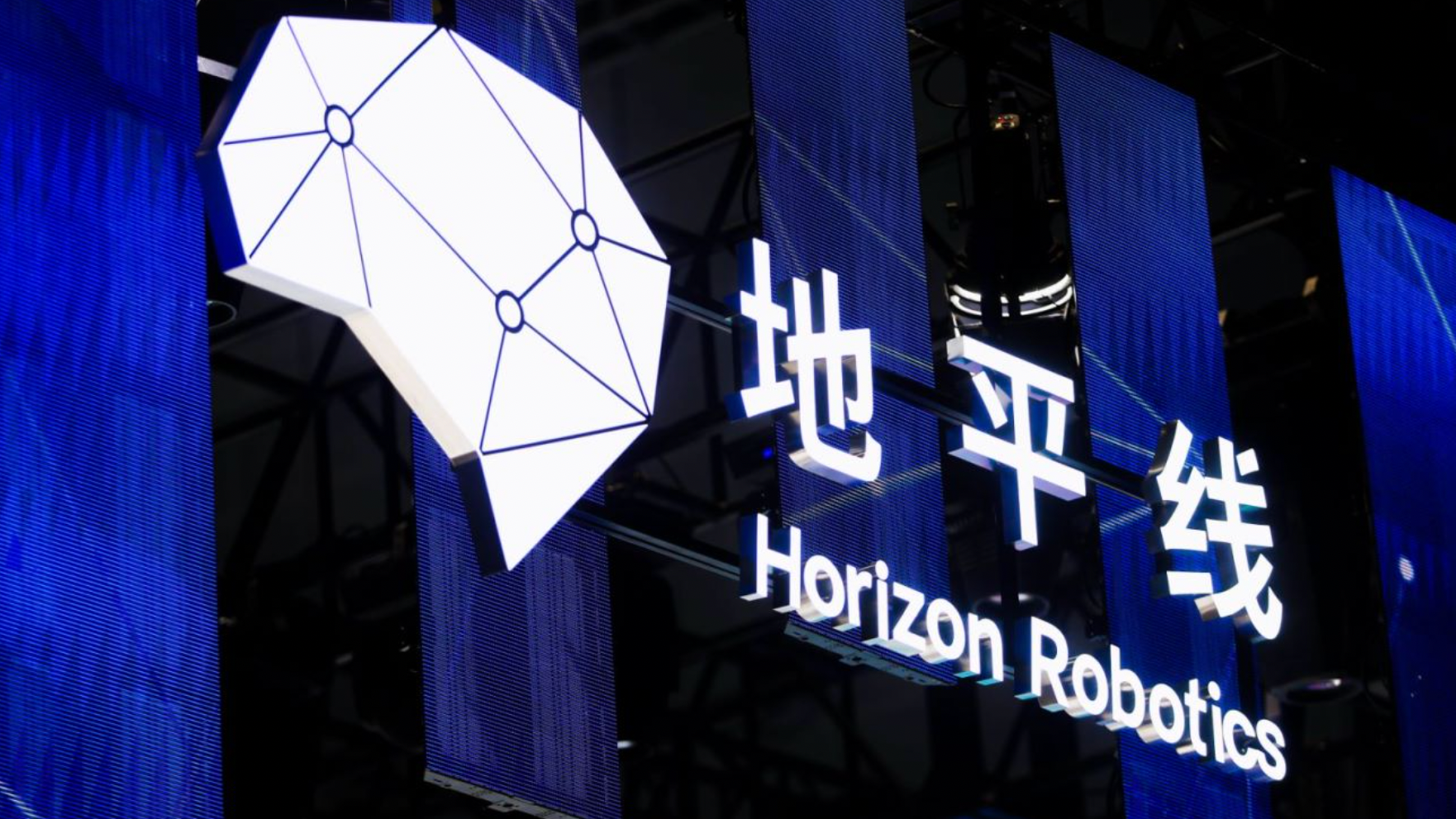Ideal Automotive takes a giant leap forward.
On the first day of the Shanghai Auto Show, April 18th, Ideal Automotive unveiled its pure electric solution as part of its “Dual-Energy Strategy”. Along with the release of Ideal AD Max 3.0, Ideal Automotive announced its entry into the era of intelligent driving.
It is worth mentioning that the “dual-energy” referred to by Ideal Automotive consists of “intelligence” and “electricity”.
Specifically:
- The “intelligence strategy” refers to the technology platform provided by the “Intelligent Driving” and “Intelligent Space” based on software 2.0 capability to provide an AI intelligent vehicle experience.
- The “electricity strategy” refers to the parallel energy policy of “extending electric power” and “high-voltage pure electric” based on the latest high-voltage pure electric solution.
At the presentation, Ma Donghui, CEO of Ideal Automotive, stated that with the release of the “dual-energy strategy,” Ideal Automotive has entered a new stage of development.
Ideal Automotive announced the start of the intelligent driving 3.0 era at this presentation.
In fact, the reason it is called intelligent driving 3.0 is because Ideal Automotive has been through two major iterations in the intelligent driving field:
- Intelligent driving 1.0 era: In 2021, Ideal Automotive’s full-stack self-developed results in the field of intelligent driving made its debut on the Ideal ONE model, achieving high-speed NOA.
- Intelligent driving 2.0 era: In August 2022, with the release of Ideal L9, ideal intelligent driving was divided into two product lines: AD Max and AD Pro. AD Max 2.0 uses NVIDIA OrinX chips and lidar technology from Hesai at the hardware level, enabling it to achieve superior NOA performance; AD Pro 2.0 uses Horizon Journey 5 chips and can achieve high-speed NOA based on pure visual perception.And now, the reason why IDEAL EMPHASIZES its intelligent driving 3.0 is that its intelligent driving is extended from highway NOA to city NOA. The product implementation of city NOA is the latest release of IDEAL AD Max 3.0 version. According to the official statement, it can free itself from the dependence on high-precision maps, and realize real-time perception, decision-making and planning like a human driver.
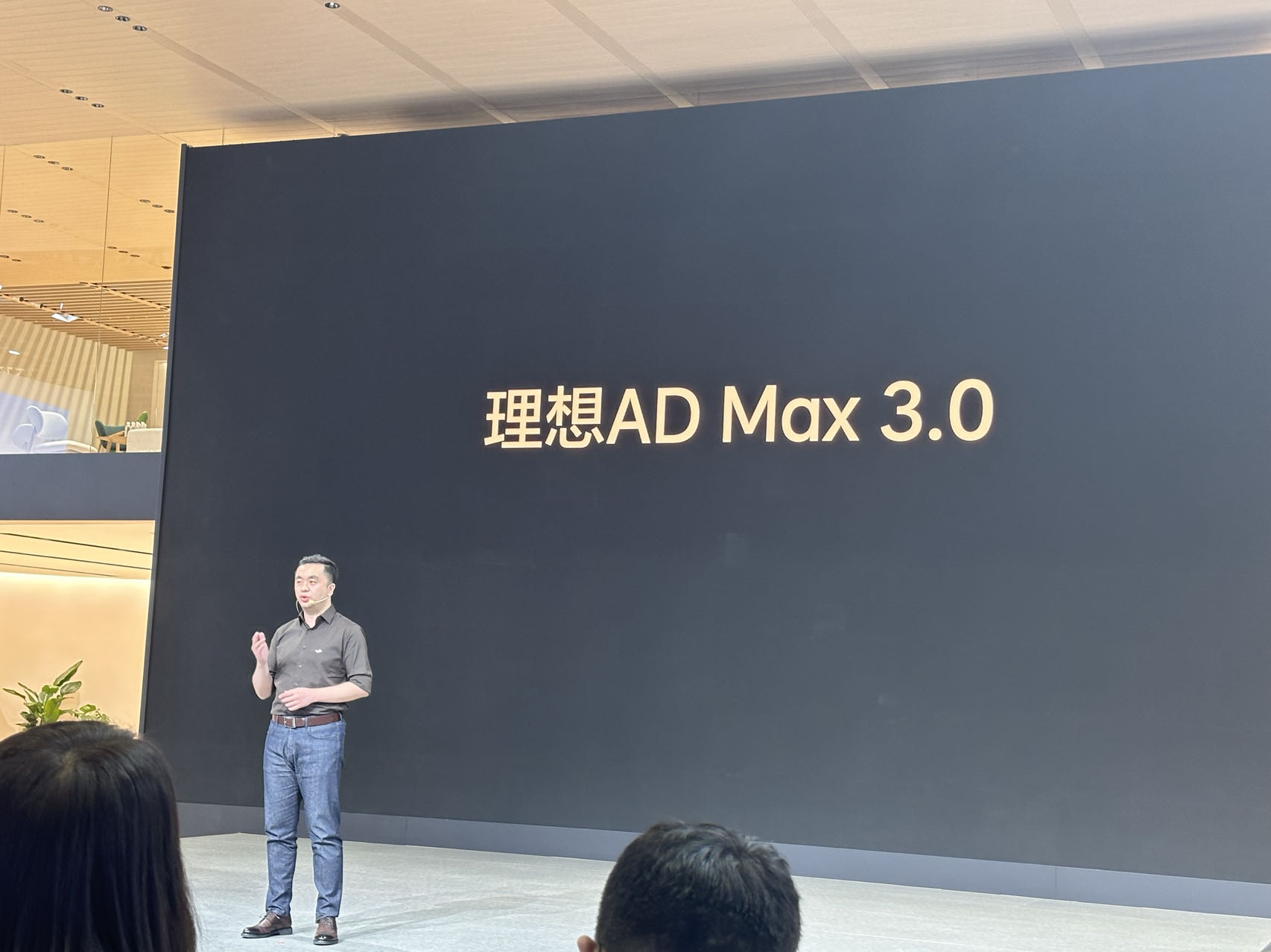
The following are the key technical features of IDEAL AD Max 3.0:
- Three neural network models are used: static BEV network, dynamic BEV network and Occupancy network. The accuracy and details of the reconstruction based on the Occupancy network are enhanced by the NeRF technology, which realizes the complete restoration to the physical world.
- The perception results of the three large neural network models are summed up to the predictive model, the prediction of the future actions of all traffic participants in the next few seconds can be output in real time. The prediction result is dynamically adjusted to provide more accurate information for subsequent decision-making and planning.
- Currently, IDEAL’s autonomous driving training mileage has exceeded 400 million kilometers, lasting for more than 10.74 million hours, so the algorithm can be better trained.

As for the specific push plan, IDEAL AUTOMOBILE mentioned that the city NOA function of IDEAL AD Max 3.0 will begin to be pushed to internal test users this quarter, and will be pushed to 100 cities in China by the end of the year.
Moreover, a major news is that the software and service prices for IDEAL AD Max 3.0 city NOA is free for life. This means that every AD Max user will have the full-scenario NOA function of AD Max 3.0, including city NOA and highway NOA, without any subscription fees.
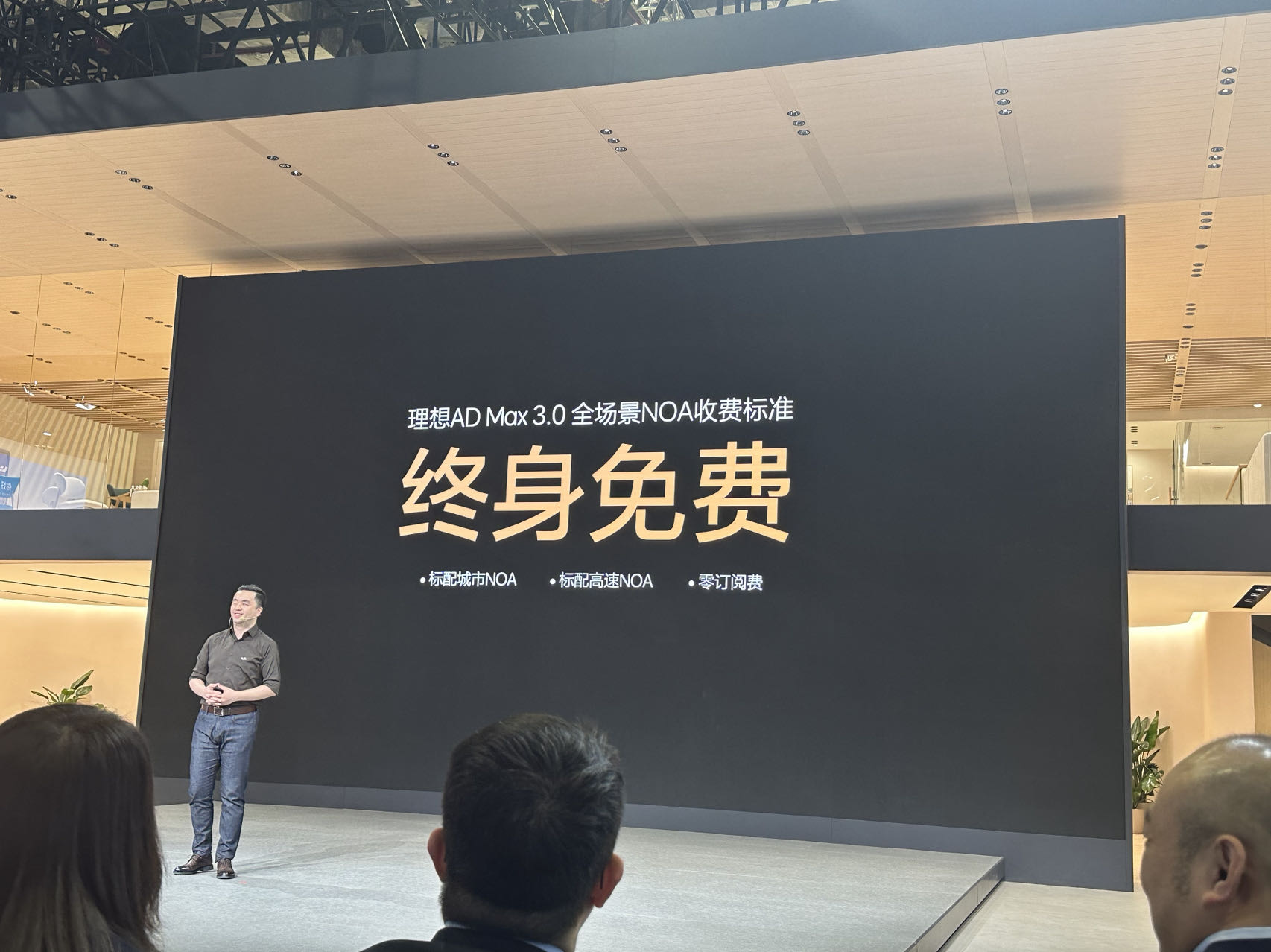 So why is the Ideal AD Max 3.0 free? Ideal Automotive’s Vice President of Intelligent Driving, Lang Xiampeng, told Garage 42:
So why is the Ideal AD Max 3.0 free? Ideal Automotive’s Vice President of Intelligent Driving, Lang Xiampeng, told Garage 42:
For intelligent driving, Ideal Automotive consistently adheres to the standard configuration strategy, and there is no cost pressure… However, because the Ideal AD Max 3.0 is free, it means that all owners who buy Max models will enjoy the city NOA function. They are also more familiar with intelligent driving, thus increasing the difficulty and complexity of R&D–but Ideal has the confidence to do this because of its confidence in technology.
When talking about the logic behind pushing City NOA to 100 cities before the end of the year, Lang Xiampeng said:
Ideal Automotive’s logic for intelligent driving is data-driven. When deploying City NOA, some verification is required on the roads of each city. However, this verification process requires the coordination of Ideal Automotive’s training platform capabilities accumulated over five years and the actual driving process of car owners. Therefore, the amount of test data and training mileage needs to be determined based on the number of owned vehicles, the number of car owners, the frequency of driving mileage in the city, and the coverage rate. Ideal is also gradually advancing these 100 cities based on the above situations.
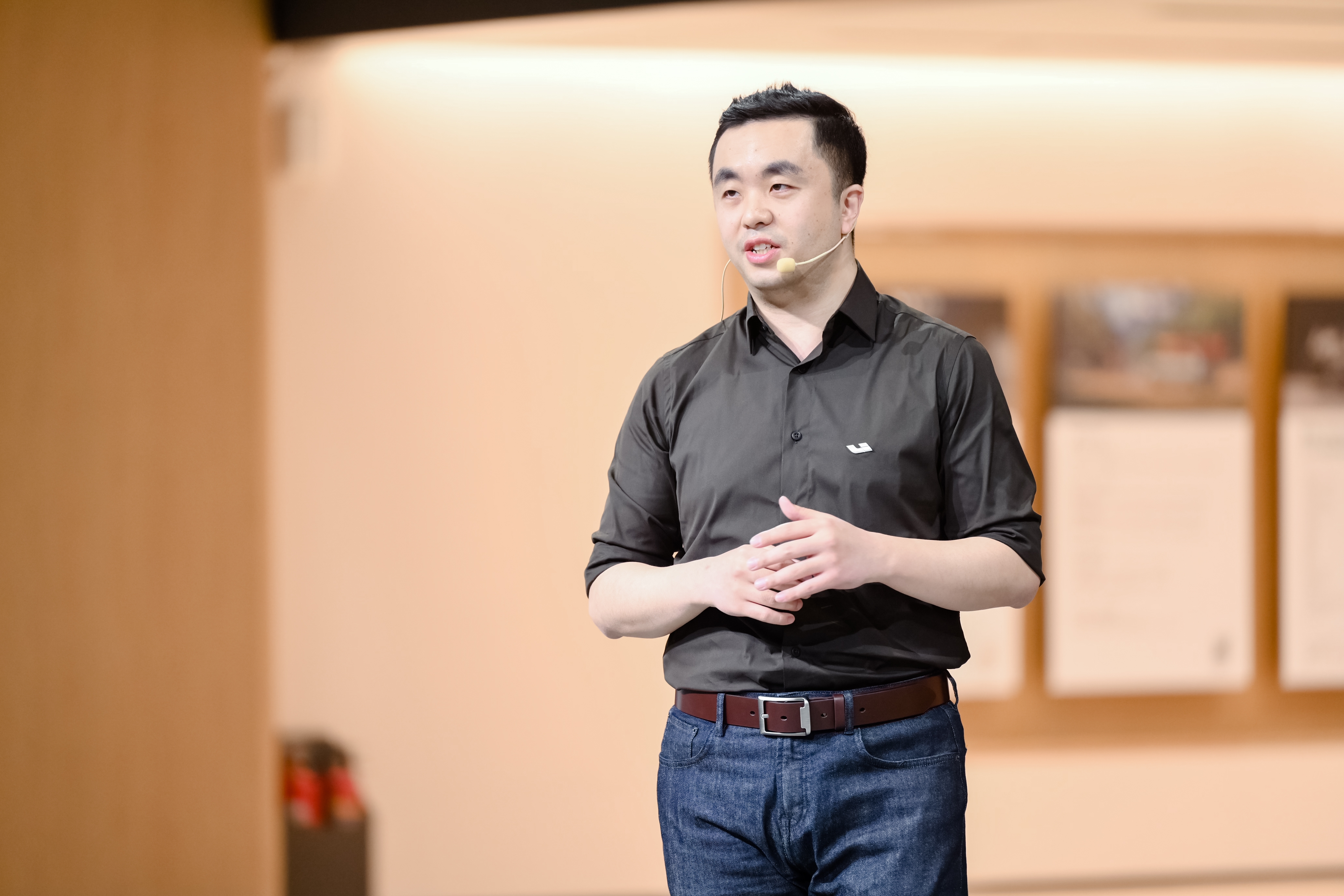
It should also be noted that users who buy the Ideal AD Pro 2.0 model cannot use City NOA. Lang Xiampeng responded:
In Ideal’s product definition, the Pro model provides good high-speed NOA products and experiences for family users, while Max provides all-scenario intelligent driving, including City NOA experiences. Therefore, both the Pro and Max models are differentiated in terms of product design and software and hardware. So the Pro model will not carry the city NOA, but some of the Max model’s capabilities can be migrated to the Pro model.
What gives Ideal Automotive the confidence to enter the pure electric market?
Compared to intelligent driving, the focus of this press conference was more on Ideal Automotive’s strategy for entering the pure electric market.
After all, since its establishment, Ideal Automotive has always adhered to the extended-range route. Although it has achieved sales of more than 320,000 units, it has never launched a pure electric vehicle. After Ideal Automotive announced that it would enter the pure electric vehicle market, there were discussions and even some questioning online.## What is NIO’s confidence in entering the pure electric market?
From the conference, NIO’s pure electric strategy focuses on solving a core issue: charging efficiency.
To achieve this solution, NIO has made the following plans and arrangements:
Provide an 800V ultra-fast charging solution, achieving the effect of “charging for 10 minutes and traveling 400 kilometers” to give pure electric vehicle users a refueling-like charging experience.
To achieve this solution, NIO states that it will adopt a series of core technologies, including a high-voltage electric drive system using third-generation power semiconductors, batteries with 4C charging capabilities, a wide temperature range thermal management system, and a 4C ultra-fast charging network.
In terms of the 4C ultra-fast charging network, NIO stated that it will continuously improve the construction of the ultra-fast charging network in the next three years. By the end of this year, NIO will complete the construction of 300+ high-speed ultra-fast charging stations, covering the Beijing-Tianjin-Hebei region, Yangtze River Delta region, Guangdong-Hong Kong-Macao Greater Bay Area, and the Chengdu-Chongqing region. By 2025, NIO’s ultra-fast charging stations will be built 3,000, which can cover 90% of the national highway mileage and major cities.
At the conference, NIO also announced its vehicle plan for the next three years:
Through the strategy of combining range extension and pure electric power, by 2025, NIO will form a “1 super flagship + 5 range-extended electric models + 5 high-voltage pure electric car models” product layout, targeting the market above 200,000 yuan, fully meeting the needs of family users.
It is worth mentioning that at the end of the conference, NIO also announced that its first pure electric vehicle model will become the world’s first model equipped with CATL’s 4C Kirin battery. At the scene, NIO CEO Li Xiang also signed a comprehensive strategic partnership agreement with CATL Chairman Zeng Yuqun.After the press conference, Li Xiang, CEO of Xpeng Motors, also said in the interview session:
“There are indeed some challenges for Xpeng Motors to enter the pure electric market, including the power replenishment problem, which is mainly achieved through 800V high-voltage charging and self-built charging networks; Another issue is the cost, and Xpeng’s response strategy is to reduce the cost through self-developed power modules, self-developed thermal management systems, etc.”
Regarding Xpeng’s supercharging station, Li Xiang said that the maximum power of the supercharging station is expected to be upgraded from 480kW to 600kW, and the number of 4C supercharging piles may also become two, mainly based on the total number of 4C electric cars in the market; In addition, these supercharging stations will also be open to other brands.
When talking about why Xpeng began to develop pure electric vehicles this year, Li Xiang said:
“The biggest reason why Xpeng chose to develop pure electric vehicles this year is that we believe the timing is ripe. Therefore, our core starting point for choosing between range-extending electric vehicles or pure electric vehicles is to make it more convenient for users, especially the power replenishment experience. We believe that over the past few years, there have always been some pain points for power replenishment for electric vehicles. But now, the technology has matured, and some 4C or even 6C charging schemes have started to be widely used.
“In addition to fast charging capability, we also need to consider issues such as battery cycle life and thermal safety, as well as some other core components such as silicon carbide power chips, high-voltage electric drive systems, etc. Both on the technical and cost levels, we have reached a very, very good time point. Therefore, we chose to release a pure electric high-voltage fast-charging strategy at this time, which is the most fundamental consideration logic.”
Also, during the Q&A session, Li Xiang shared some information about Xpeng’s first pure electric model, specifically:
- “It is not a traditional MPV and will have a very special shape that is different from existing products in the market.
- “On the other hand, it will pursue the ultimate drag coefficient, which means a reduction in energy consumption and better cruising range, but at the same time ensuring a very large space.
- “In addition, this vehicle will adopt a modular design and support Ideal AD Max 3.0, etc.
It is also worth emphasizing that Li Xiang explicitly stated that Xpeng Motors will not deliver pure electric vehicle models to users within this year.This means that the ideal first pure electric vehicle model will at least be delivered to consumers next year. If Ideal Auto’s supercharging network plan is successfully implemented this year, when consumers receive the ideal pure electric vehicle, they can already recharge at more than 300 high-speed supercharging stations.
It is evident that Ideal’s strategy for pure electric vehicles is “supercharging first, before selling cars” – which is also the result of Ideal’s consideration for user experience.
Ideal Auto is entering its 3.0 version
The release of Ideal Auto’s “Dual Energy Strategy” has a background worth noting:
In the past year, three new cars, the Ideal L9, Ideal L8 and Ideal L7, were successively released, which improved Ideal Auto’s product line and made its overall product layout more systematic.
In terms of sales, in the first quarter of this year, with the above three new cars, Ideal Auto delivered a total of 52,584 units, a year-on-year increase of 65.8% compared to the first quarter of 2022. It is the top-selling new energy brand with a price tag above ¥300,000 and the top-selling SUV with a price tag of ¥300,000 to ¥500,000, including fuel-powered cars.
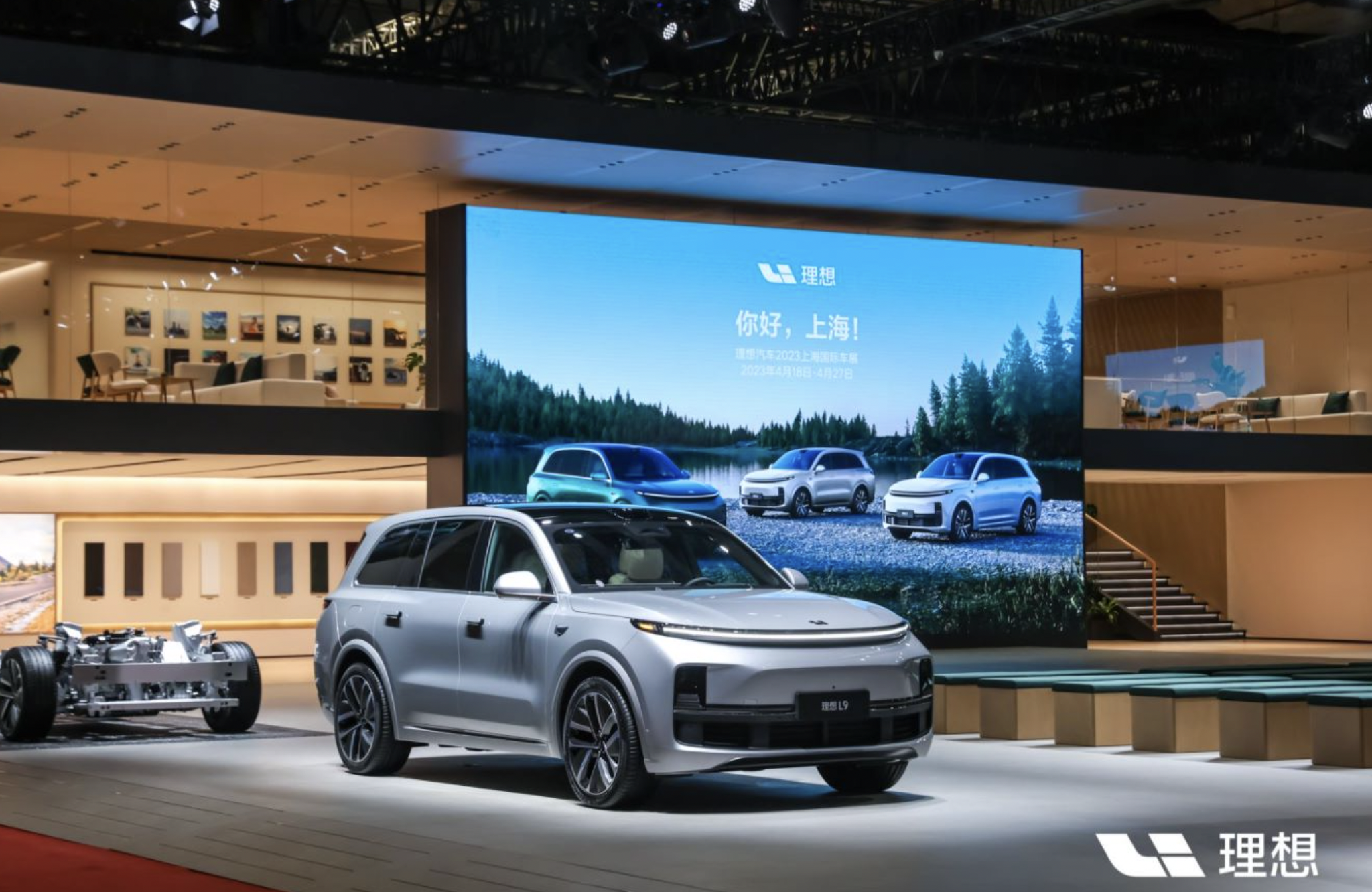
As shown, Ideal Auto’s product system has already begun to prove itself.
Looking back at Ideal Auto’s past development history at the product level, we can see two obvious different stages, which are Ideal Auto’s 1.0 and 2.0:
-
The first stage: from the launch of Ideal ONE in 2018 to its exit from the historical stage in 2022, Ideal Auto completed the development stage from 0 to 1. This stage is relatively long and is the Ideal Auto 1.0 version.
-
The second stage: in the past year, the Ideal L series of three car models have been successively launched. They have preliminarily completed the systematic aspects of product and supply chain, and have been verified by the market. It can be said that they are completing the transformation from 1 to 10, which is the Ideal Auto 2.0 version.
At the same time, on the occasion of the release of Ideal Auto’s pure electric strategy, we can actually see that the switch from Ideal ONE to the Ideal L series in 2022 is an incremental change of its product system. However, now that Ideal Auto is beginning to switch from a single range-extended route to the “two-legged approach” of range extension and pure electric strategy, it is a qualitative change of its product system.This means that the change in the product system of IDEAL’s cars this time is more profound, and it will have a very profound impact on IDEAL’s entire supply chain system, organizational system, and technical system.
Therefore, we believe that IDEAL’s cars at this node are transitioning to version 3.0.
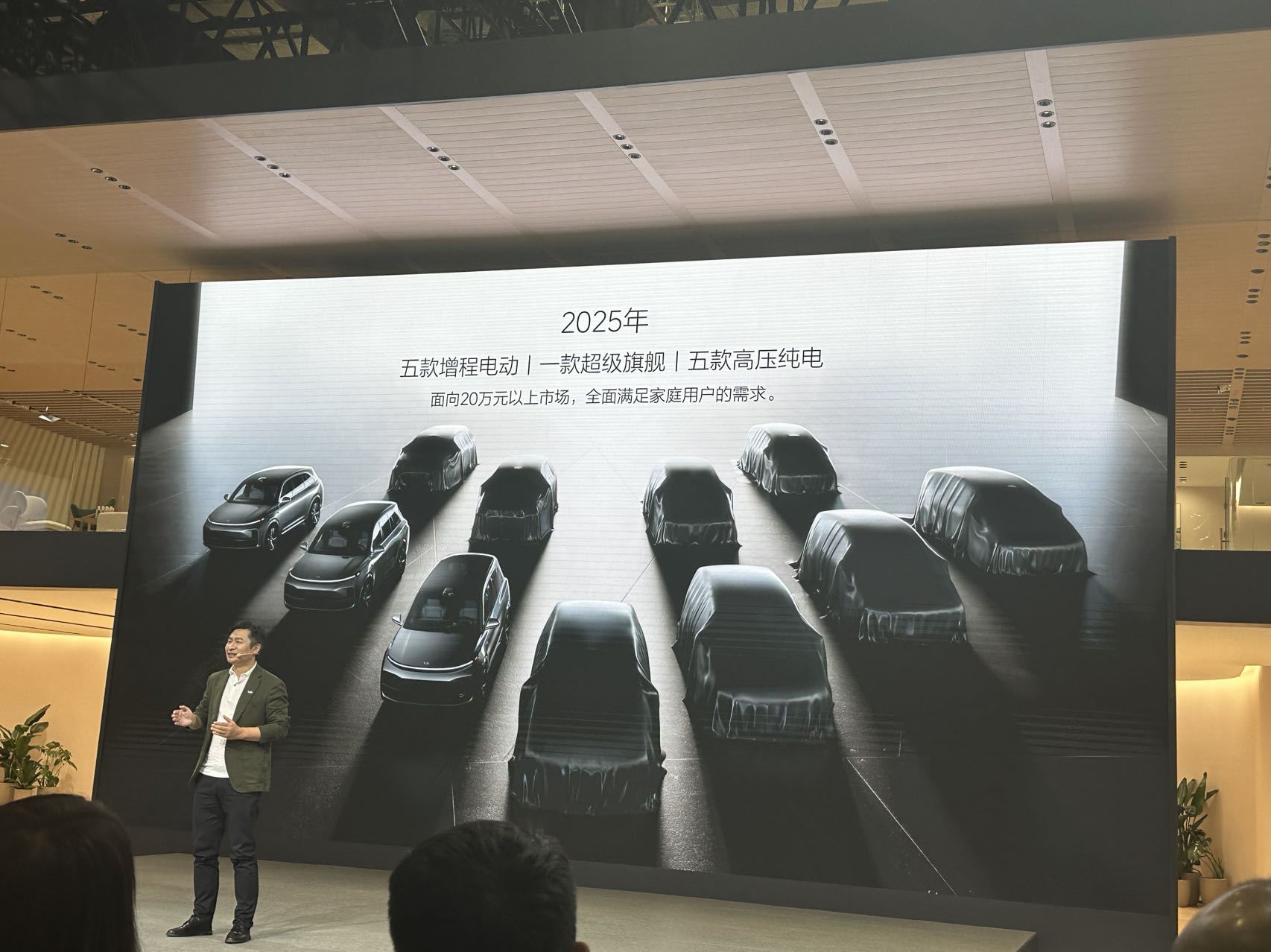
Interestingly, it seems like a coincidence:
At the same time that IDEAL’s car product system is undergoing a big switch to version 3.0, IDEAL’s intelligent driving is also undergoing a qualitative change this year. From IDEAL AD Max 1.0 to IDEAL AD Max 2.0, it stayed within the scope of high-speed NOA and belonged to quantitative changes, but when it comes to IDEAL AD Max 3.0, urban NOA is implemented, which is already a qualitative change.
Anyway, facing Li Xiang’s definition of the “three-year elimination game for smart electric cars” (from 2023 to 2025), IDEAL’s “dual-energy strategy” seems more like a response made by IDEAL’s cars to deal with this elimination game, either actively or passively.
At present, the product layout of IDEAL’s cars, which includes “1 super flagship model + 5 extended-range electric vehicle models + 5 high-pressure pure electric vehicle models,” has also been locked in until 2025. Before this product layout is finally settled, IDEAL’s cars obviously can’t stand still at the current version and can only continue to iterate and move forward.
This article is a translation by ChatGPT of a Chinese report from 42HOW. If you have any questions about it, please email bd@42how.com.
